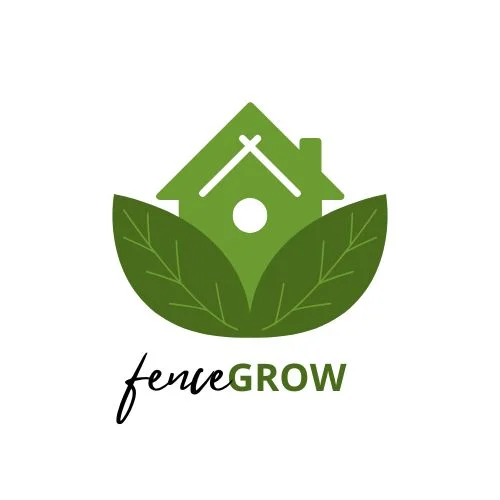Wattle fencing offers versatile, eco-friendly boundaries for your vegetable garden. You’ll find traditional wattle and daub techniques provide wildlife-friendly borders, while rustic willow enclosures perfectly contain raised beds. Hazel branch panels create protective microclimates, and decorative herringbone patterns add visual appeal while supporting climbing plants. For gardeners seeking flexibility, portable hurdles allow for seasonal rotation. These ancient techniques combine functionality with natural charm that can transform your growing space.
Traditional Wattle and Daub Techniques for Garden Boundaries

While ancient civilizations developed wattle and daub for building shelters, this technique translates beautifully to modern garden boundaries.
Ancient wisdom reimagined: wattle and daub construction brings timeless natural elegance to today’s garden boundaries.
You’ll create these natural borders using a woven lattice of flexible wood strips (the wattle) covered with a protective mixture (the daub).
Begin by driving sturdy stakes into the ground at regular intervals. Weave pliable branches like willow or hazel horizontally between these uprights to form a basket-like structure.
For the daub, mix clay soil with straw and possibly mud to create a binding compound that you’ll press into the wattle’s gaps. This traditional method has been utilized since the Neolithic period, dating back at least 6,000 years.
The resulting fence, typically 150-200mm thick, provides an effective non-load-bearing boundary that attracts beneficial wildlife while naturally complementing your vegetable garden’s aesthetic and providing protection from unwanted visitors.
Rustic Willow Wattle Enclosures for Raised Vegetable Beds
When seeking a perfect blend of functionality and natural beauty, rustic willow wattle enclosures stand out as an exceptional choice for raised vegetable beds.
These charming structures, created by weaving flexible willow branches between stakes placed about 12 inches apart, add whimsical appeal to your garden while serving practical purposes.
You’ll find these eco-friendly fences not only prevent soil erosion and deter garden pests but also provide natural support for climbing vegetables. For optimal results, consider soaking your willow branches in water before construction to improve branch flexibility during the weaving process.
The best part? You’re continuing a centuries-old tradition while embracing sustainable gardening practices.
No chemical treatments are needed, and when the fence eventually deteriorates, it naturally returns to the earth.
Hazel Branch Woven Panels for Wind Protection and Plant Support

Hazel branch woven panels offer a more robust alternative to willow enclosures for gardeners seeking lasting protection and support in their vegetable plots. Harvested through sustainable coppicing methods, these durable panels create effective windbreaks while providing sturdy support for climbing vegetables.
You’ll appreciate how they establish microclimates that improve growing conditions by reducing wind exposure and increasing ambient warmth. Spacing posts 400 mm apart provides optimal structural integrity when creating these traditional fences.
- Traditional hand-weaving techniques create panels that blend rustic charm with practical functionality
- Customize height and weave density based on your garden’s specific wind protection needs
- Integrate panels strategically around vulnerable crops or as dividers between garden sections
Unlike temporary solutions, these panels last for years with minimal maintenance, making them an excellent investment for serious vegetable gardeners looking to combine traditional craftsmanship with practical garden protection.
Decorative Herringbone Wattle Patterns for Functional Garden Dividers
Decorative herringbone wattle patterns transform ordinary garden dividers into functional works of art that enhance your vegetable garden’s structure and visual appeal.
This distinctive V-shaped weaving creates both beauty and strength, as the alternating diagonal weave distributes tension evenly while preventing gaps that small animals might exploit.
You’ll find herringbone works best with flexible materials like hazel, willow, or muscadine vines—ideally freshly cut for maximum pliability.
Position your stakes about 3 inches apart, then weave branches diagonally, alternating sides to create the characteristic pattern.
Beyond aesthetics, these dividers serve practical purposes: they act as effective windbreaks, support climbing plants, and clearly delineate garden sections.
With proper construction, your herringbone wattle dividers will provide rustic charm that complements your garden’s organic textures for seasons to come.
This design also creates attractive garden borders or pathways that guide visitors through your growing space while maintaining the natural aesthetic.
Portable Wattle Hurdles for Seasonal Garden Rotation Systems

Portable wattle hurdles represent one of the most versatile and practical innovations for gardeners seeking efficient seasonal rotation systems.
These lightweight structures, traditionally made from hazel, willow, or maple rods, allow you to easily reconfigure your garden throughout the growing season. You’ll appreciate how they promote soil health by preventing continuous use of the same area while simultaneously managing pest populations that can’t establish permanent residence. This traditional farming technique has been integral to land management for thousands of years, with evidence dating back to the pre-pottery Neolithic period.
- Quick setup and repositioning – Simply overlap hurdles and secure them to posts, using the traditional “twilley holes” as carrying handles and positioning aids
- Environmental benefits – Reduce overgrazing and worm loads by rotating livestock or garden sections seasonally
- Weather adaptation – Create windbreaks for sensitive crops or temporary barriers during challenging weather conditions
Frequently Asked Questions
Can Wattle Fences Withstand Heavy Snow Accumulation?
Wattle fences typically can’t withstand heavy snow accumulation. You’ll need reinforced posts, cross-bracing, and regular maintenance to prevent damage. They’re better suited for mild climates unless you add substantial structural support.
How Do You Treat Wattle Materials to Prevent Rot?
You’ll need to seal your wattle materials with borate treatments, copper-based preservatives, or natural oils like linseed. Don’t forget to pre-treat stakes before installation and guarantee good drainage to prevent moisture damage.
Are Wattle Fences Deer-Resistant?
Yes, wattle fences can be deer-resistant when you build them at least 8 feet tall with tightly woven saplings, prickly branches, and cross-bracing. You’ll need regular maintenance to guarantee they remain effective deer barriers.
Can I Build Curved Wattle Fences for Circular Garden Beds?
Yes, you can build curved wattle fences for circular garden beds. Use flexible stakes and more pliable materials for bending. The weaving technique adapts well to curves, creating visually appealing contours for your garden.
Do Wattle Fences Require Permits in Suburban Neighborhoods?
Typically, you won’t need permits for wattle fences that stay under 4 feet in front yards or 6 feet in backyards. Check your local zoning codes though, as suburban neighborhoods may have specific regulations.
In Summary
Whether you’re embracing ancient techniques or seeking practical solutions, wattle fencing offers the perfect blend of beauty and function for your vegetable garden. You’ll find these woven structures not only protect your precious plants but also add rustic charm to your growing space. Start with whichever style suits your needs—you’ll soon appreciate how these sustainable, biodegradable boundaries enhance your garden’s productivity while connecting you to centuries of agricultural tradition.





Leave a Reply